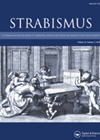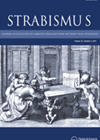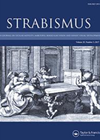
Journal Reviews
Testing of binocular contrast sensitivity as an objective measure of severity in intermittent exotropia
The purpose of this study was to compare the binocular contrast sensitivity ratio (measured with the Vision CSV-100 vector chart) between 40 intermittent exotropia patients and 40 normal controls. The authors also evaluated the effect of intermittent exotropia compensation status...
IXT control vs. binocular summation
The purpose of this study was to evaluate the relationship of BS scores with other current markers used for evaluating the control in preoperative intermittent exotropia (IXT) patients. Data was collected on stereoacuity, angle of deviation, Newcastle control score (NCS),...
Stereo distance in XT
The test distance effect on stereoacuity was explored in a population with intermittent exotropia along with use of two types of stereograms with crossed and uncrossed disparity. At near and distance distances, the median for both disparities was 60”; 79%...
BT for intermittent exotropia
This study aimed to evaluate the effect of botulinum toxin (BT) on the amount of deviation and fusional control state of intermittent exotropia. Twenty-one patients (five male and 16 female) aged five to 18 years with progression of exotropia were...







